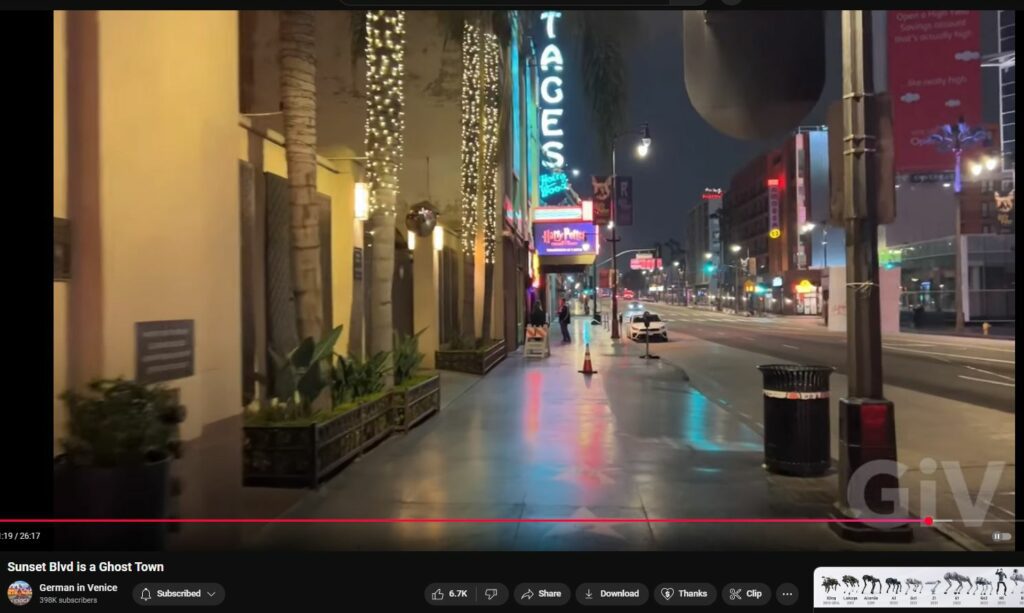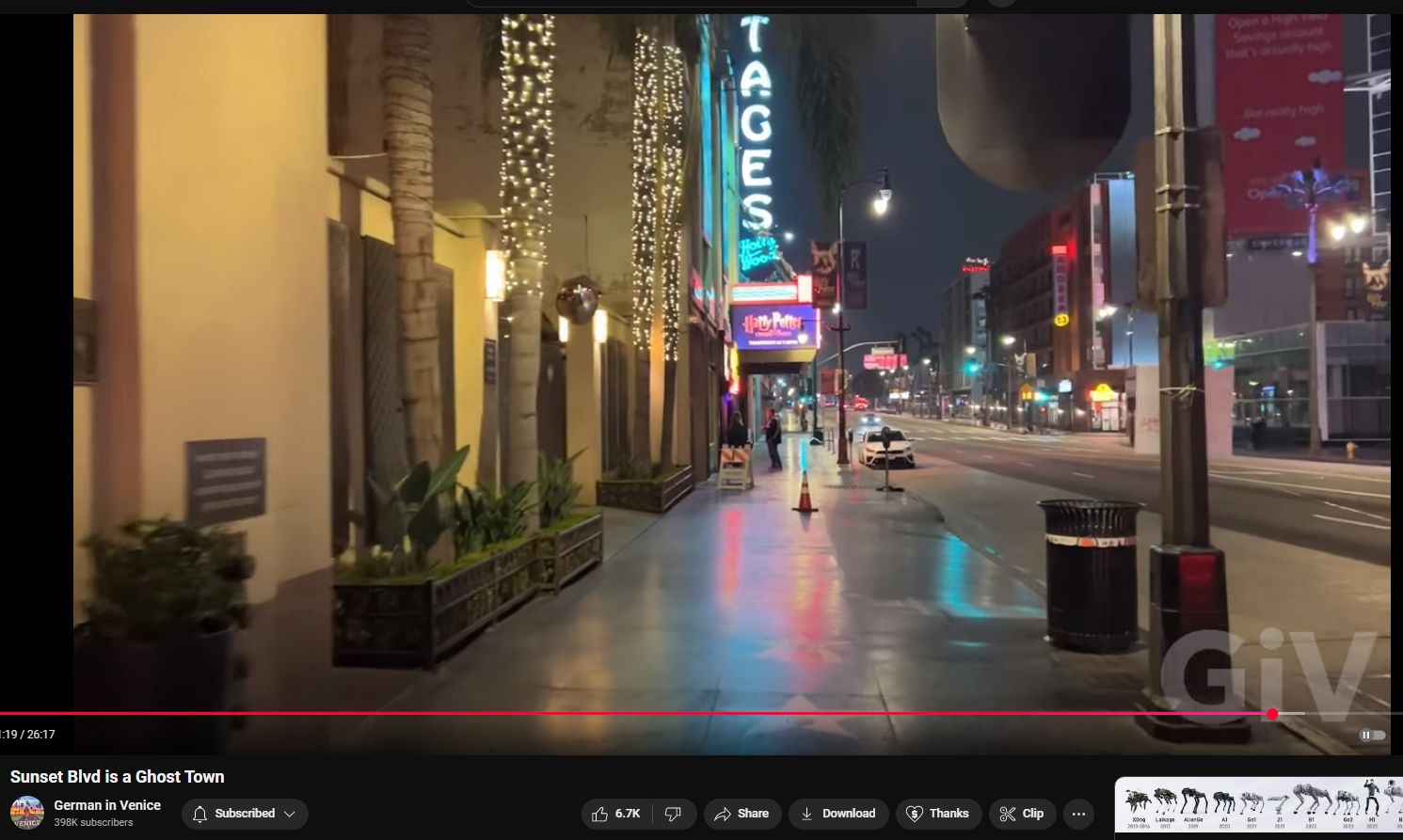DECLINE by DESIGN Ghost Town Hollywood
Ever wondered, ‘what happened to all the people’ when musing about abandoned Aztec temples and other stone areas? Apparently, desolation can be created via plandemics, unbridled criminals, ‘hourly wage’ and other excellence-blunting socialistic yokes, and fomentation of ominous hopelessness. The consequent scatter is sudden and remarkable. Fortunately, society is woven multiple facets and layers deep and does not necessarily rely upon geography any longer. The “elites” (i.e., business owners) are merely reducing Their own various income streams, perhaps on purpose; maybe the squashing of the American Middle Class is expanded to include the upper-middle business owners defunded by plebianic abandonement of this area. Maybe the commoners can finally feel and see this life-suck for what it has always been.
“Social engineering” is a very real, and ancient, science.

This video in part reflects on the transformation of bustling urban centers into desolate areas, drawing parallels to ancient abandoned sites like Aztec temples. Suggested is that such desolation can result from orchestrated events termed “plandemics,” unchecked criminal activities, restrictive economic policies such as “hourly wage” systems, and the cultivation of widespread hopelessness. Emphasized is that “social engineering” is a longstanding practice used to influence societal structures and outcomes.
The video titled “Ghost Town Hollywood – German in Venice,” offers a visual representation of the current state of Hollywood, aligning with the themes discussed in the post.
This perspective aligns with broader discussions about the impact of socio-economic policies and crises on urban environments. For instance, the recent wildfires in Los Angeles have exacerbated existing challenges in Hollywood, leading to increased uncertainty and displacement among industry workers. These events have contributed to a sense of desolation in areas once vibrant with activity.
Additionally, the phenomenon of urban areas becoming “ghost towns” is not unique to Hollywood. Surfridge, a once-thriving coastal neighborhood near Los Angeles International Airport, experienced a similar fate. Established over a century ago, Surfridge was home to affluent residents, including Hollywood elites. However, the expansion of the airport and subsequent noise pollution led to its decline and eventual abandonment. Today, it stands as a fenced-off ghost town, overtaken by nature and serving as a sanctuary for wildlife.
These examples underscore the complex interplay of economic policies, environmental factors, and social dynamics in shaping the lifecycles of urban areas.
